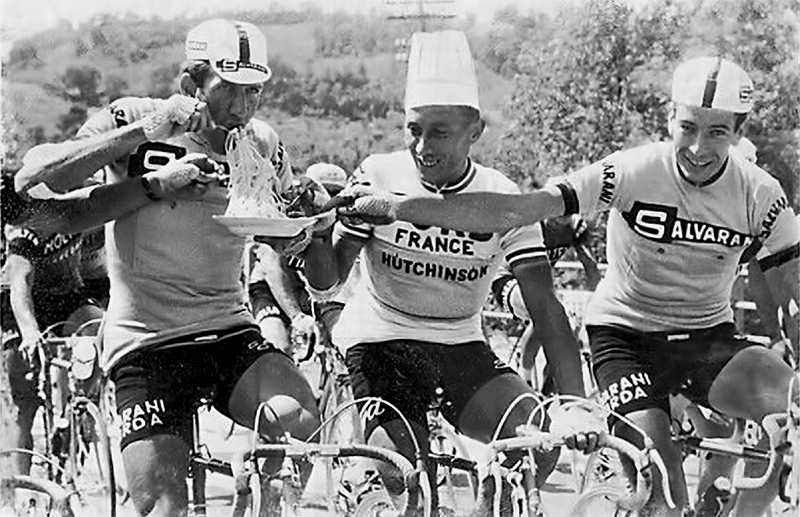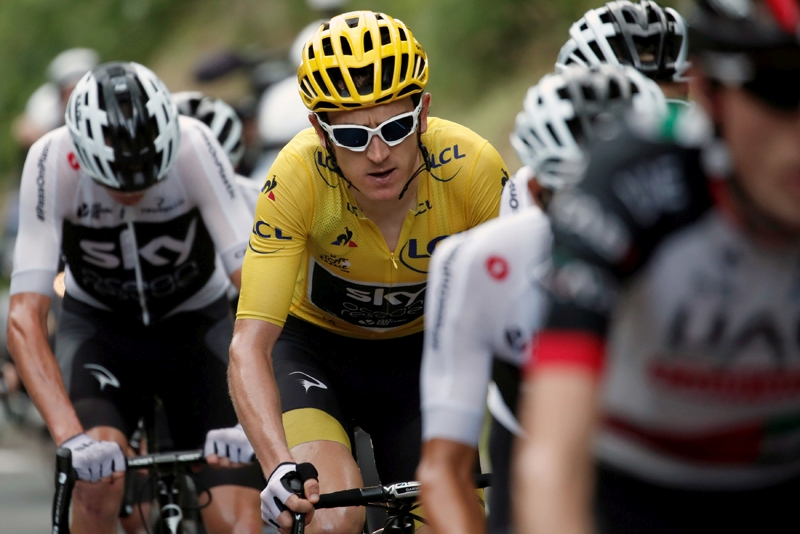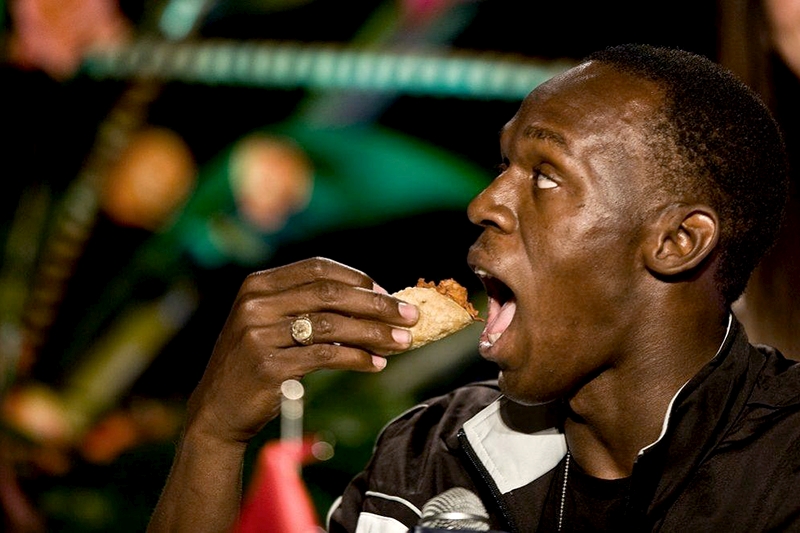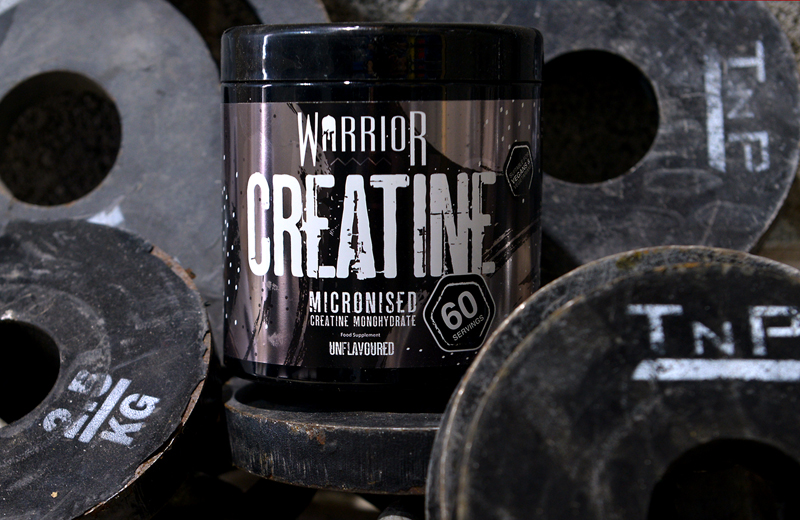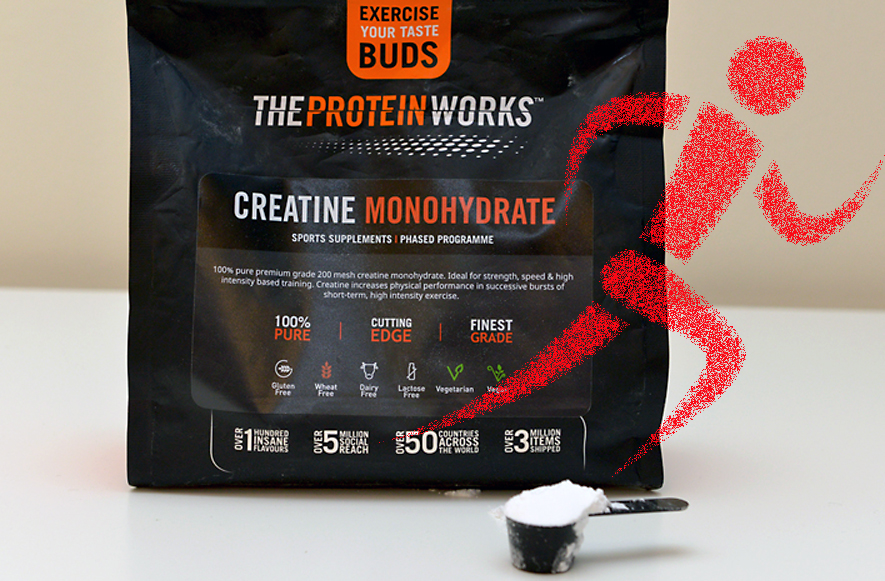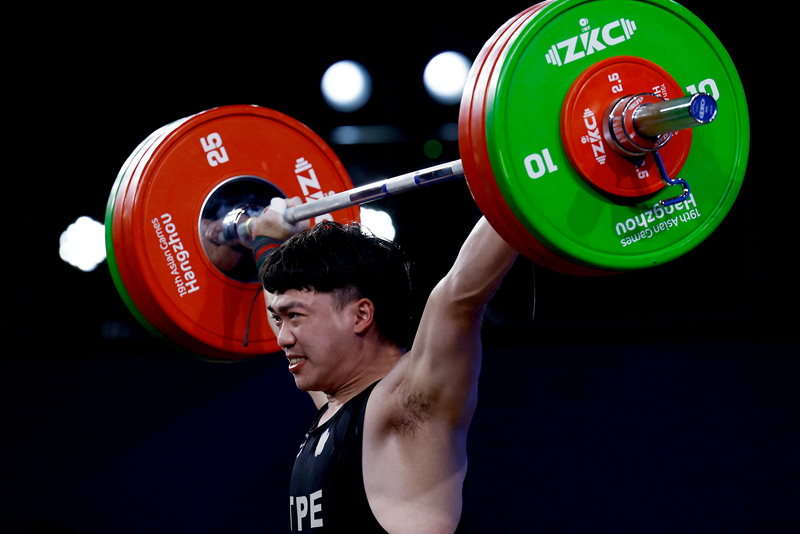You are viewing 1 of your 1 free articles. For unlimited access take a risk-free trial
Carbohydrate drinks and gels: too much of a good thing?

Consuming carbohydrate during longer training sessions or races is a proven way to enhance performance. But can you have too much of a good thing?
Endurance athletes with only a rudimentary grasp of sports nutrition are probably very aware that ensuring an adequate intake of carbohydrate during training and competition is absolutely vital for performance - especially during longer workouts or races, where even a small carbohydrate shortfall can lead to a significant drop in performance. But why is carbohydrate so important?Five-star fueling
The reason for this is simple; carbohydrate is the human body’s 5-star fuel. Stored in the muscles as ‘glycogen’, carbohydrate can be broken down very quickly during exercise to provide large amounts of energy for in the working muscles to fuel exercise. While it’s true that fat is a concentrated source of energy and can also be stored in the body, it can’t be broken down to release energy as rapidly as carbohydrate. This is because, burning fat for energy requires more oxygen per unit of chemical energy produced in the muscles (ATP)and more intermediate steps to release that energy. Since oxygen availability to the working muscles is strictly limited (determined by aerobic capacity), producing the as much energy as possible from the available supply of oxygen is critical for performance. Another reason why carbohydrate trumps fat as fuel for vigorous exercise is that (for short periods) it can be broken down to release energy even when there’s no oxygen available - for example a flat-out sprint to the line or a short, steep climb.However, there is a downside of using carbohydrate/glycogen for energy, which is that your body’s stores are limited. At best, muscles can only store around 2.5 hours’ worth of glycogen and even mild glycogen depletion is known to impair performance(1,2). That’s where carbohydrate drinks and gels come in; consuming rapidly-absorbed carbohydrate on the bike can help slow down the rate at which your body’s stores of muscle glycogen are depleted. This in turn helps to delay the onset of fatigue, prolongs the time to exhaustion, and by doing so, improves performance(3,4).
Long and short of it
Given the facts above, endurance athletes might assume that consuming ample carbohydrate during longer training sessions is a guaranteed formula for success – indeed, this is the strategy adopted by many runners, cyclists and triathletes, from recreational to elite. However, a growing body of research suggests that there could be short-term and long-term drawbacks to this approach, both of which may actually dent endurance performance!Let’s start by looking at short-term carbohydrate consumption – ie the effects of consuming drinks, bars, gels etc during a run, ride or swim – and asking a question: how much carbohydrate do you consume on average per hour during training/competition? The typical answer to this question tends to be along the lines of “I take around 3 or 4 gels per hour” or “I drink around ‘x’ mls per hour.” The problem is that this doesn’t tell us the actual amount of carbohydrate consumed (in grams) per hour – something that as we will see shortly is extremely important. Box 1 below explains why this is the case.
Box 1: Carbohydrate gels and drinks counting conundrum
Pick up any carbohydrate gel and you’ll see a wide variation in carbohydrate content per sachet or per 100g of product. For example, some gels contain quite a bit of water, which means that even the relatively large sachet size might provide less than half the amount of carbohydrate found in a smaller sachet of more concentrated product.The same goes for carbohydrate drinks; following the manufacturer’s mixing directions doesn’t always yield a standard concentration in terms of grams per litre. And even if it did, many athletes like to tweak the amount of powder they add to water according to their taste preferences – ie make their drinks a little more concentrated or dilute than standard.
To know how much carbohydrate you’re actually consuming each hour, you need to check those labels. In the case of gels, you need to see how many actual grams of carbohydrate each gel sachet contains and then multiply by the number of sachets consumed. In the case of carbohydrate drinks, you need ignore the volume consumed but instead concentrate on how many grams of carbohydrate you’re adding to your sports drink bottle with each scoop of powder then make a record of how many bottles (or part bottles) you consume.
The actual amount of carbohydrate consumed matters because to obtain the maximum benefits that carbohydrate supplementation can bring, you need to be consuming enough carbohydrate to make the biggest performance difference. The scientific consensus is that for carbohydrate drinks and gels drinks based on glucose/maltodextrin, this equates to around 60g per hour(5-8). For drinks that are based on a combination of glucose/maltodextrin and fructose (sometime dubbed ‘2:1’ or ‘multiple transporter’ drinks), the studies show that this figure rises to around 80g per hour(9-11).
Sledgehammer approach
Okay, suppose you want to consume enough carbohydrate on the move to maximise your performance. How best to do this? Well, you could do some quick sums on carbohydrate contents and tailor your drink/gel intake accordingly so that you obtain the recommended 60/80g per hour. Or you could simply to consume quite large amounts of carbohydrate regardless so that even if you exceed these guidelines, you know that you’re at least getting the ‘sufficient amount’ – something of a ‘sledgehammer’ approach.
You might think that the sledgehammer approach would be easier and simpler but research suggests that this is counterproductive(12). US scientists studied 51 cyclists and triathletes who completed a number of cycling trials. Each trial consisted of a hard 2-hour ride at a constant intensity, immediately followed by a computer-simulated 20km time-trial, which subjects were asked to complete as quickly as possible. During the trials, the cyclists and triathletes drank identical-tasting 2:1 glucose-fructose carbohydrate drinks, but which supplied different amounts of carbohydrate per hour: 10, 20, 30, 40, 50, 60, 70, 80, 90, 100, 110, and 120g.
As the hourly carbohydrate intake rose, so did performance (as you’d expect). However this upwards performance trend only occurred up to an intake of 78g of carbohydrate per hour. After that, progressively higher intakes resulted in less performance gain than that observed at 78g per hour - see figure 1. In plain English, these results indicate is that when athletes are seeking optimum performance gains, a (quite literally) measured approach to the hourly carbohydrate intake is needed, because guesstimating will likely mean they consume either less or more than the ideal amount, both of which could hinder performance.
Figure 1: Change in performance gains with varying carbohydrate (glucose/fructose) intake(12)

As the grams/hour of carbohydrate consumed, so did performance gains – but only up to 78g/hour after which the gains diminished.
Science is best
At this point, you might be thinking that it’s not possible to be completely prescriptive about how much carbohydrate to consume because every athlete’s needs are slightly different – so-called ‘biochemical individuality’. However, while an instinctive self-chosen carbohydrate feeding strategy is popular among many endurance athletes, the evidence suggests that it’s not as good as relying on science and properly calculated energy intakes.For example, a study by German researchers looked at whether a scientific and calculated approach to nutrition was better than a self-chosen nutrition strategy at improving cycling performance(13). Eighteen trained cyclists performed two identical trials, each consisting of a 2.5-hour endurance ride at 70% maximal oxygen uptake (moderately hard) followed by a flat-out time trial of 40 miles.
In the ‘scientific trial’, they consumed 90g of a ‘2:1’ carbohydrate-blend drink (plus 5mg of caffeine per kilo of bodyweight) per hour, while in the other trial, the cyclists used their own strategy – one that they believed worked best for them based on their previous experiences. However, the scientific strategy was demonstrably superior, enabling the cyclists to complete the time trial 8 minutes faster and with a significantly higher average power output (212 vs. 184 watts) – a very big improvement in times and power outputs of 6.3% and 15.2% respectively (see figure 1)!
Figure 2: Self-chosen vs. ‘scientific’ strategy

The scientifically chosen strategy (90g per hour of glucose/fructose blend plus 5mgs per hour per kilo of caffeine) resulted in a 15.2% improvement in maximum sustained power.
The longer term
We’ve seen that consuming sufficient (but not excessive) carbohydrate is the best way to enhance cycling performance on the day. But are there any long-term downsides to consuming carbohydrate during every ride and training session? Some scientists have suggested that there may be. This is because studies show that when muscles are working in a ‘low-glycogen environment’ (ie when carbohydrate isn’t consumed during longer periods of exercise), beneficial changes take place within the genes of muscle cells. Over time, certain genes become more active, enabling these exercising muscles to derive more energy from the breakdown of fat, with less coming from carbohydrate(14-17).In the longer term, the ability to use more fat for energy while undertaking endurance training is potentially very handy. Not only can it help when trying to shed some excess body fat and improve power-to-weight ratio, it could also improve performance. Theoretically at least, if less stored muscle glycogen is used for energy, reserves of muscle glycogen (the body’s preferred fuel during hard exercise – ie racing) are depleted less rapidly, which could prolong endurance – especially if muscle glycogen stores are fully replenished by consuming plenty of carbohydrate-rich foods prior to race day, combined with the use of a normal carbohydrate drink during a race.
The problem however is that research has failed to confirm performance benefits of this approach. It’s true that studies on cyclists who performed long training sessions without consuming any carbohydrate found (over a period of time) that fat burning was enhanced(18). However, there were no performance gains at the end of the period compared to when carbohydrate was consumed regularly during training. The same results have been found with runners(19). Another problem is that performing long and hard training sessions without any carbohydrate intake comes with its own set of potential drawbacks (see box 2), making the argument for carbohydrate restriction even more tenuous. Having said that, very recent research on a ‘sleep-low’ approach to carbohydrate (where carbohydrate intake is limited during an overnight period following hard training – see this article) has produced some promising results(20).
Box 2: Potential drawbacks of carbohydrate restriction during long sessions
- Increased secretion of stress hormones leading to lowered immunity and increased risk of upper respiratory tract infections.
- Reduced length of training sessions due to fatigue induced by low glycogen (this could hinder preparation for a long-distance event).
- Increased risk of burnout and overtraining.
- Reduced hydration in hot-weather training (some carbohydrate in a drink can help transport fluid from the gut into the body).
- Increased muscle tissue damage, leading to slower recovery.
Although there’s no definitive consensus, it’s probably fair to say that something of a balanced approach might be best. During longer training sessions and races (90 minutes or more), carbohydrate drinks/gels/bars taken during the session will help performance, increasingly so over longer distances. For a single daily session of under 90 minutes, there’s less benefit to be had. And once sessions are shorter than 60 minutes per day, there’s really little value in consuming any carbohydrate during exercise (but of course your post-session nutrition should still be carbohydrate-rich). Not always consuming carbohydrate during your shorter sessions therefore might actually be a good thing – not least because it will to train your muscles to burn more fat. And let’s face it, most endurance athletes could be faster if they carried a little less fat!
Summary and recommendations
Many endurance athletes under-consume carbohydrate during long rides – something you’ll know if you’ve ever had ‘the bonk’ or ‘hit the wall’! However, using the ‘get as much carbohydrate in the body as possible’ approach to maintain performance could be counterproductive, a better approach is to employ a carefully measured approach, aiming for close to 80g per hour when consuming 2:1 type carbohydrate. There’s also some evidence that doing some of your training without consuming carbohydrate drinks/gel/bars could offer some benefits in terms of fat burning/loss. However, this practice should be restricted to shorter sessions only.Practical recommendations
- When choosing a carbohydrate supplement, choose a 2:1 glucose:fructose type. The evidence strongly suggests that these types offer superior performance benefits over glucose-only drinks.
- If you use carbohydrate gels, note the grams of carbohydrate per sachet and work out how many sachets it takes to deliver 80g – aim to consume this number per hour.
- If you use carbohydrate drinks, calculate how many grams of carbohydrate each of your drink bottles contain when mixed according to your personal preference then calculate how many bottles per hour you need to consume to deliver 80g/hour.
- If you use a combination of drinks and gels, keep a track of the total carbohydrate consumed per hour (aiming of course for 80g per hour).
- If you use carbohydrate-protein energy drinks (typically containing 4:1 carbohydrate:protein), remember that only 4/5ths of the powder you scoop into your bottle is carbohydrate so scale your calculations accordingly.
- Aim to complete at least one shorter training session (under 90 minutes) per week without using carbohydrate – but be sure to consume plenty of carbs afterwards.
- The occasional longer session (over 90 minutes) without carbohydrate can also be beneficial, but keep your training intensity quite gentle.
- During periods of very heavy/intense training, it’s best to consume carbohydrate during every session.
- Acta Physiol Scand 1967; 71:129-139
- Oxford Textbook of Sports Medicine, 2nd edn. New York: Oxford University Press 1998
- J Appl Physiol. 1994; ss76(3):1014-9
- J Appl Physiol 2004; 96: 1285–1291
- Med Sci Sports Ex 1993; 25:42-51
- Int J Sports Med 1994; 15:122-125
- Med Sci Sports Ex 1996; 28: i-vii
- J Athletic Training 2000; 35:212-214
- Med Sci Sports Exerc. 2008 Feb;40(2):275-81;
- Appl Physiol Nutr Metab. 2012 Jun;37(3):425-36;
- Int J Sport Nutr Exerc Metab. 2010 Apr;20(2):122-31
- Med Sci Sports Exerc. 2013 Feb;45(2):336-41
- Appl Physiol Nutr Metab. 2012 Aug;37(4):637-45
- Cell 134, 405-415, 2008
- Horm Metab Res. Jan;40(1):24-8, 2008
- J Appl Physiol. Nov;105(5):1462-70, 2008
- J Appl Physiol. May;106(5):1513-21, 2009
- . Appl Physiol. Nov;105(5):1462-70, 2008
- J Appl Physiol. May;106(5):1513-21, 2009
- PLoS One. 2021; 16(12): e0260959
Related Files
Newsletter Sign Up
Testimonials
Dr. Alexandra Fandetti-Robin, Back & Body Chiropractic
Elspeth Cowell MSCh DpodM SRCh HCPC reg
William Hunter, Nuffield Health
Newsletter Sign Up
Coaches Testimonials
Dr. Alexandra Fandetti-Robin, Back & Body Chiropractic
Elspeth Cowell MSCh DpodM SRCh HCPC reg
William Hunter, Nuffield Health
Keep up with latest sports science research and apply it to maximize performance
Today you have the chance to join a group of athletes, and sports coaches/trainers who all have something special in common...
They use the latest research to improve performance for themselves and their clients - both athletes and sports teams - with help from global specialists in the fields of sports science, sports medicine and sports psychology.
They do this by reading Sports Performance Bulletin, an easy-to-digest but serious-minded journal dedicated to high performance sports. SPB offers a wealth of information and insight into the latest research, in an easily-accessible and understood format, along with a wealth of practical recommendations.
*includes 3 coaching manuals
Get Inspired
All the latest techniques and approaches
Sports Performance Bulletin helps dedicated endurance athletes improve their performance. Sense-checking the latest sports science research, and sourcing evidence and case studies to support findings, Sports Performance Bulletin turns proven insights into easily digestible practical advice. Supporting athletes, coaches and professionals who wish to ensure their guidance and programmes are kept right up to date and based on credible science.
